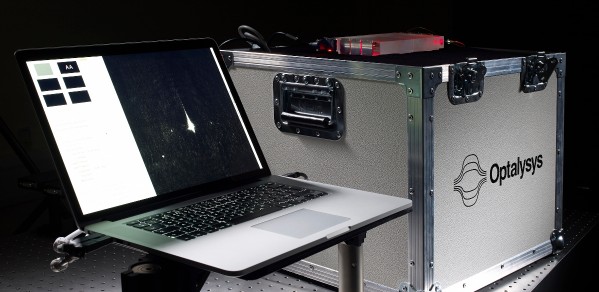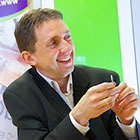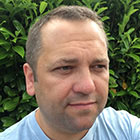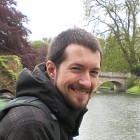
Alumni of the University of Cambridge, including from the Department of Engineering, have gone on to found Optalysys, a company with the goal of making computer processors that use light instead of electricity.
It was clear from the start that optical electronics held huge potential to be applied to big data processing tasks.
Dr Nicholas New
The company’s latest achievement is a functioning prototype of a scaleable, lens-less optical processor able to perform mathematical calculations. The design, codenamed Project GALILEO, represents a breakthrough in scaleable, practical optical processing that calculates at the speed of light and in parallel. Applications for this research are in weather forecasting, vehicle aerodynamics and big data analysis for genomics and financial analysis.
Two new projects are on the horizon. One is in gene sequencing and analysis with the establishment of the Genome Analysis Centre. “We are also a partner in a major European project led by the European Centre for Mid Range Weather Forecasting,” said Dr Nicholas New, Optalysys founder and Cambridge alumnus. “This is laying the foundations for exascale computing in weather forecasting.” Also, Optalysys is talking with a major Formula 1 team as well as financial institutions about future projects.
 Nicholas, who earned his PhD at Cambridge in Optical Pattern Recognition, founded the company on the back of research he performed for his degree. “It was clear from the start that optical electronics held huge potential to be applied to big data processing tasks,” he said. “The challenge to work on something truly groundbreaking was very attractive.” Nicholas studied under Professor Tim Wilkinson of the Photonics Group (who holds an advisory role at Optalysys).
Nicholas, who earned his PhD at Cambridge in Optical Pattern Recognition, founded the company on the back of research he performed for his degree. “It was clear from the start that optical electronics held huge potential to be applied to big data processing tasks,” he said. “The challenge to work on something truly groundbreaking was very attractive.” Nicholas studied under Professor Tim Wilkinson of the Photonics Group (who holds an advisory role at Optalysys).
 Also on the team are Drs Andy Lowe and Ananta Palani. Andy’s role on the team is to examine how large computational tasks are undertaken and how optical computing can reduce the energy computation uses. He came to Cambridge to study Computational Fluid Mechanics under Professor Peter Davidson and was attracted to the diverse range of high-quality research. His education here created “a solid foundation for the challenges we face building state of the art technology,” Andy said. “If you want to push the boundaries of what we are doing as engineers and scientists, you need to trust your education. Cambridge did that.”
Also on the team are Drs Andy Lowe and Ananta Palani. Andy’s role on the team is to examine how large computational tasks are undertaken and how optical computing can reduce the energy computation uses. He came to Cambridge to study Computational Fluid Mechanics under Professor Peter Davidson and was attracted to the diverse range of high-quality research. His education here created “a solid foundation for the challenges we face building state of the art technology,” Andy said. “If you want to push the boundaries of what we are doing as engineers and scientists, you need to trust your education. Cambridge did that.”
 Hailing from the United States, Ananta chose Cambridge for the research taking place at the Centre of Molecular Materials for Photonics and Electronics (CMMPE). There he examined photonics in the area of Fourier optics and helped advance optical microscope technology that can observe extremely small objects such as viruses. The self-directed style of the PhD prepared him immensely for his career and at Optalysys. “I learned through hard-work how to iteratively research a given area and how to collaborate with others,” Ananta said. He hopes the technologies he works on today will “increase the currently achievable speed and capability of researchers and hopefully improve life for humanity.”
Hailing from the United States, Ananta chose Cambridge for the research taking place at the Centre of Molecular Materials for Photonics and Electronics (CMMPE). There he examined photonics in the area of Fourier optics and helped advance optical microscope technology that can observe extremely small objects such as viruses. The self-directed style of the PhD prepared him immensely for his career and at Optalysys. “I learned through hard-work how to iteratively research a given area and how to collaborate with others,” Ananta said. He hopes the technologies he works on today will “increase the currently achievable speed and capability of researchers and hopefully improve life for humanity.”

